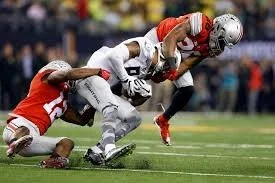Written by Sam O’Neill
When is it Safe to Return to Play?
After all the countless hours you’ve spent in the gym and on the track, the thirst to get back out there with your teammates or back into individual competition would be high. I’m sure you’ve wondered why your physio has held you back from getting that important tick of approval to return to play (RTP).
Well let me give you an insight into our decision making process when it gets to this stage of your rehab plan.
Firstly, we ensure that the injured area has healed to an acceptable level, based on standard healing times. For example, we know a broken bone usually takes around 6 weeks to heal, so RTP is usually not recommended before this timeframe. There are instances where the healing tissue is likely not 100% healed by the time you are deemed safe to return to play. Some studies have shown that it may take up to 12 months (sometimes longer) to regain pre-injury ligament tissue strength following an ankle sprain. Most people following an ankle sprain would be safe to return to play much sooner than that, as long as they regain their range of motion, strength and function around the ankle. However, if people don’t continue with their rehabilitation in this period post injury (even after returning to play), it may make them susceptible to having ongoing issues of instability around the ankle moving forward.
Next, we look at the body symmetry of important objective measures. Strength, range of motion and joint control are all important factors that should be as close to pre-injury baseline as possible. This gives the physio confidence that the injured area has regained capacity to tolerate the demands that will be put on it during competition. When a physio doesn’t have the intel to your baseline measurements, they will often compare to your uninjured side to get a rough idea. As a general rule, within 10% compared to the un-injured side for these metrics would be the bare minimum you would have to achieve, before getting the tick of approval to RTP.
Thirdly, the physical requirements of your sport must match up to your current physical capacity. For example, AFL football requires components such as high speed and endurance running, agility, jumping and landing, body control when being tackled or knocked off the ball. It is important that all components have been ticked off in training without any increase in symptoms and at pre-injury level prior to RTP.
Training load considerations are also a very important part in returning to play with as little risk of future injury as possible. There has been a lot of scientific research published recently in relation to making sure training load is built up safely to reduce risk of future injury. Particularly for longer term injuries, this is an important part in making the decision in RTP, in relation to whether the current training load compared to playing load is too low.
Finally, and potentially the most important consideration for a physiotherapist and medical team making these difficult decisions, is the psychological nature of a player returning to play. If a player is not confident in returning to their chosen sport, the chances of them re-injuring on their return is much higher. Even if the player does survive the return, it often means they are more protective out on the field, which often significantly impacts their performance.
Hopefully this overview can give you an idea of the aspects of your rehab plan you must tick off before helping you to achieve returning to your chosen sport at your best.

